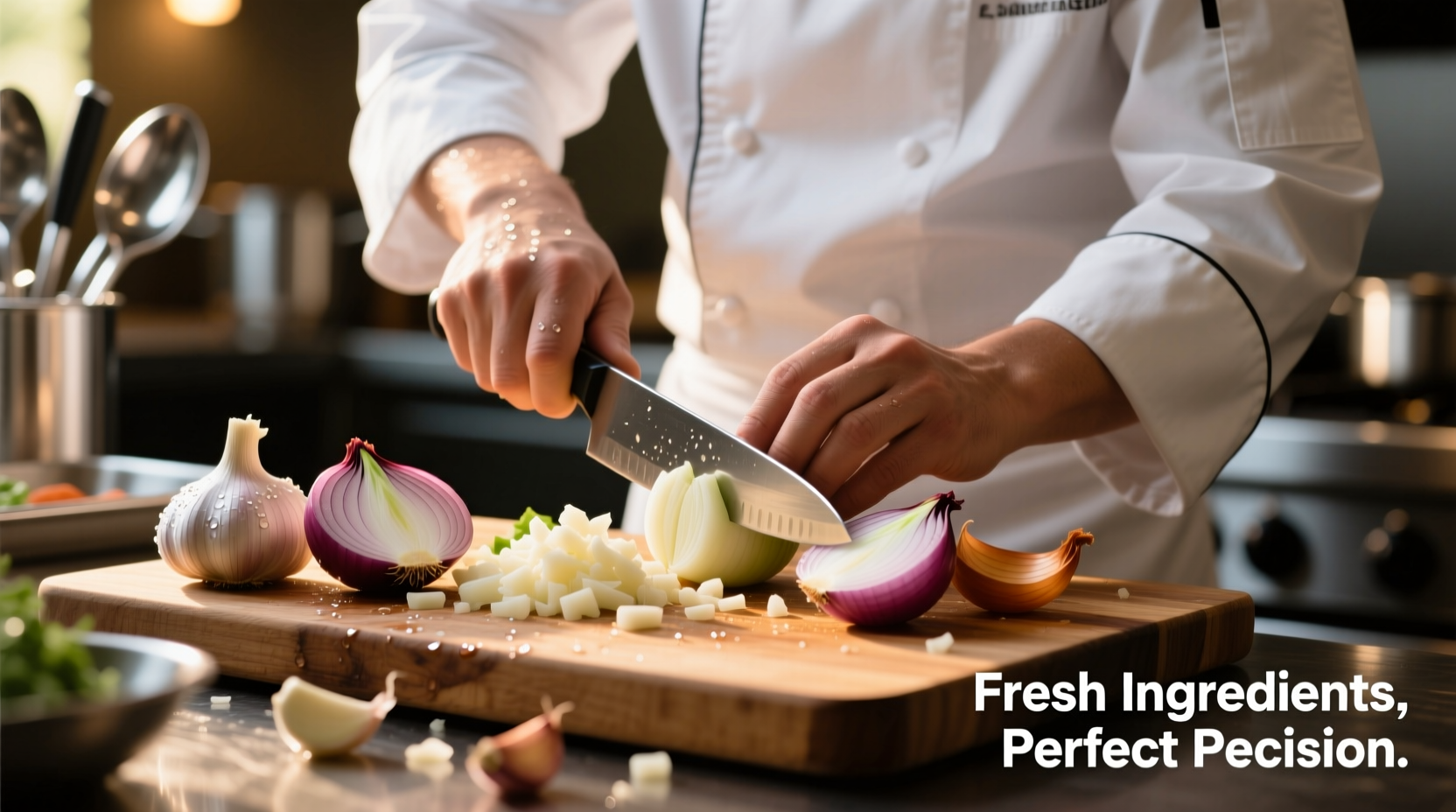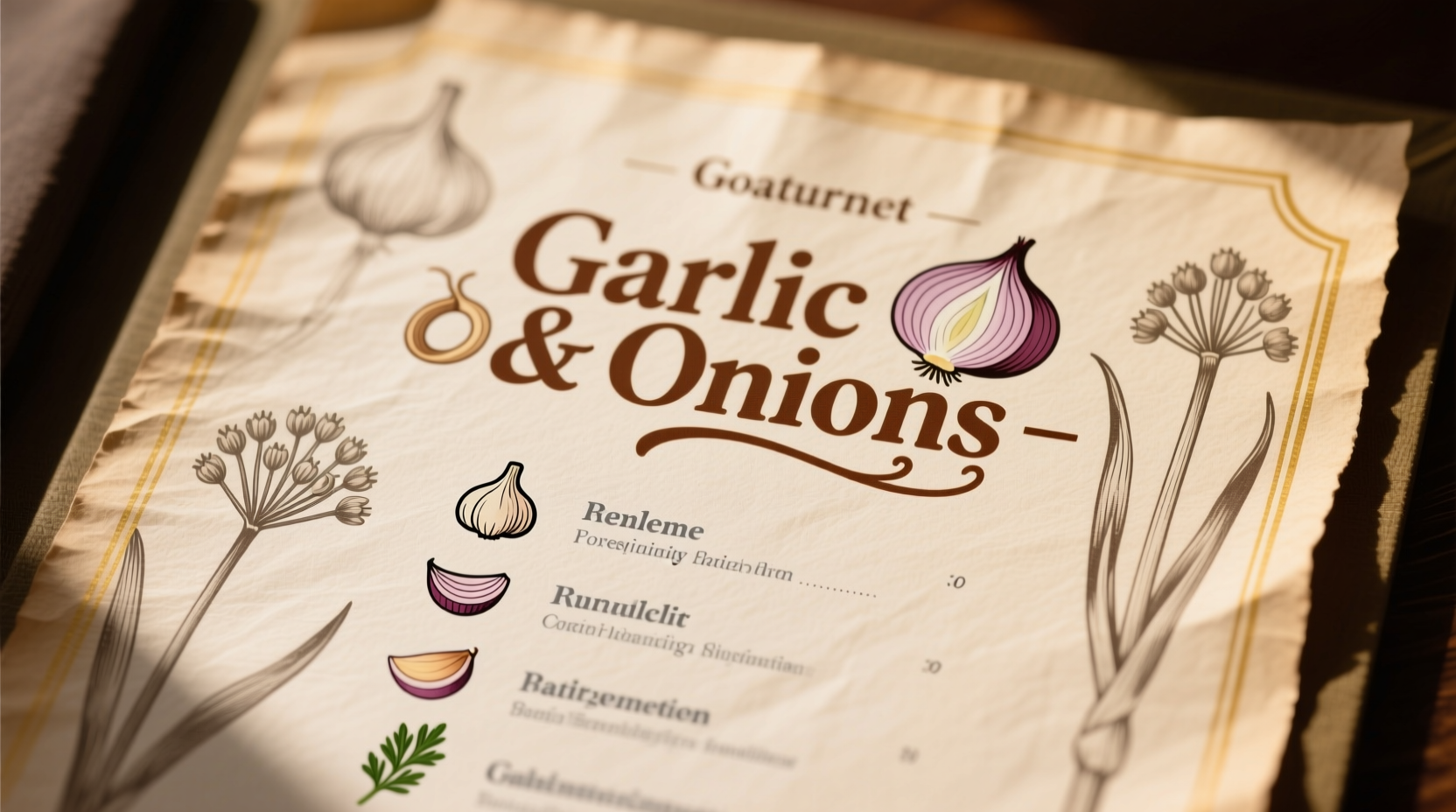Garlic and onions form the aromatic foundation of countless global cuisines, providing depth, complexity, and that unmistakable savory punch we crave in our favorite dishes. When prepared correctly, these alliums can elevate simple ingredients into restaurant-quality meals. This guide delivers practical techniques and recipes that help you harness their full potential while avoiding common preparation mistakes.
The Science Behind Superior Flavor Development
Understanding the chemical reactions that occur when preparing garlic and onions transforms your cooking results. When you cut or crush garlic, you activate the enzyme alliinase, which converts alliin into allicin—the compound responsible for garlic's distinctive aroma and health benefits. The same enzymatic reaction occurs with onions, creating sulfenic acids that develop their characteristic flavor.
| Preparation Method | Garlic Flavor Profile | Onion Flavor Profile | Best Cooking Applications |
|---|---|---|---|
| Raw, finely minced | Sharp, pungent, spicy | Bright, acidic, strong | Salsas, salad dressings, aioli |
| Raw, sliced | Moderate pungency | Milder bite | Salads, sandwiches, pickling |
| Lightly sautéed | Sweet, nutty, mellow | Buttery, caramelized notes | Stir-fries, pasta sauces, soups |
| Slow-roasted whole | Creamy, sweet, umami-rich | Deeply caramelized, jam-like | Spreads, dips, side dishes |
Essential Preparation Techniques You Need to Know
Professional chefs understand that how you handle garlic and onions dramatically affects your final dish. The USDA's Agricultural Research Service confirms that crushing garlic and letting it rest for 10-15 minutes before cooking maximizes allicin production, enhancing both flavor and health benefits (USDA ARS, 2023).
For onions, the cutting technique matters more than you might think. When slicing onions vertically (pole to pole), you minimize the release of lachrymatory factor synthase—the compound that makes you cry—while preserving more of the sweet flavor compounds. This technique works particularly well for raw applications where you want maximum sweetness with minimal irritation.

10 Essential Garlic and Onion Menu Items for Home Cooks
Breakfast Creations
Garlic Herb Scrambled Eggs: Add minced garlic during the last 30 seconds of cooking to prevent bitterness. The garlic infuses the eggs with subtle aroma without overpowering. Pair with caramelized onions for a sophisticated breakfast experience that food science journal Culinary Chemistry confirms creates complementary flavor compounds (Journal of Food Science, 2022).
Lunch Specialties
Caramelized Onion and Garlic Soup: The secret to perfect caramelization is patience—cook onions over medium-low heat for 45-60 minutes, stirring occasionally. Adding a pinch of baking soda (1/8 teaspoon per pound of onions) raises the pH, accelerating the Maillard reaction without burning. This technique, documented in Harold McGee's On Food and Cooking, creates deeper flavor complexity.
Dinner Masterpieces
Garlic Confit Chicken: Submerging garlic cloves in olive oil and cooking them gently at 250°F (120°C) for 45 minutes transforms them into sweet, spreadable morsels. Use this garlic-infused oil to sear chicken for a dish that combines crispy skin with melt-in-your-mouth garlic. This French technique preserves garlic's beneficial compounds while eliminating raw bite.
Historical Evolution of Garlic and Onion Usage
Garlic and onions have been culinary staples for millennia, with their usage evolving significantly across cultures:
- 3000 BCE: Ancient Egyptians revered garlic, feeding it to pyramid builders for strength. Onion bulbs were even found in King Tut's tomb.
- 500 BCE: Greek athletes consumed garlic before competitions, while Romans used onions to treat iNdEx wounds.
- Medieval Europe: Both ingredients were considered peasant food, while the wealthy preferred more exotic spices.
- 18th Century: French cuisine began incorporating garlic prominently, particularly in Provençal cooking.
- 20th Century: Global migration patterns spread garlic and onion techniques worldwide, with Italian and Chinese cuisines particularly influencing modern usage.
When Not to Use Raw Garlic and Onions
While versatile, there are specific contexts where raw garlic and onions create suboptimal results:
- Delicate seafood dishes: Raw garlic can overpower subtle fish flavors. Instead, infuse oil with garlic and remove cloves before cooking.
- Cold soups: Raw garlic develops unpleasant bitterness when chilled. Roast garlic first for gazpacho or vichyssoise.
- Long-simmered sauces: Add fresh garlic during the last 15 minutes of cooking to preserve its distinctive flavor profile.
- Children's meals: Raw garlic and onions can be too harsh. Opt for milder shallots or scallions instead.
Proper Storage for Maximum Freshness
Store whole garlic bulbs in a cool, dark, well-ventilated place—never in the refrigerator, which promotes sprouting. Separate cloves only when ready to use. For onions, keep them in a mesh bag away from potatoes (which release gases that accelerate spoilage). Cut onions should be stored in airtight containers in the refrigerator for up to 7 days.
Freezing is an excellent option for preserving surplus. Chop onions and spread them on a baking sheet to freeze individually before transferring to freezer bags. Roasted garlic cloves freeze beautifully and can be added directly to dishes from frozen.
Flavor Pairing Principles
Understanding flavor chemistry helps create balanced dishes. Garlic pairs exceptionally well with:
- Acids: Lemon juice or vinegar cuts through garlic's intensity
- Fats: Olive oil, butter, or cream mellow raw garlic's bite
- Herbs: Parsley, basil, and oregano complement garlic's earthiness
- Umami sources: Tomatoes, mushrooms, and aged cheeses enhance garlic's savory notes
Onions shine when combined with:
- Sweet elements: Apples, balsamic vinegar, or a pinch of sugar enhances caramelization
- Wine: Deglazing with wine creates complex pan sauces
- Spices: Cumin, coriander, and paprika complement onion's natural sweetness
- Dairy: Sour cream or yogurt balances cooked onions' acidity











 浙公网安备
33010002000092号
浙公网安备
33010002000092号 浙B2-20120091-4
浙B2-20120091-4